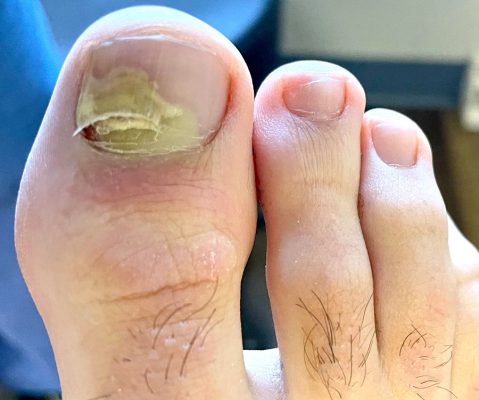 Can fungal nails be cured? The short answer is yes!
Can fungal nails be cured? The short answer is yes!
But what does it take to cure a fungal nail? I wish that was a short answer too!
In my practice, I don’t make over the top promises that all nail fungus can be cured because sometimes it can’t.
There are several products and gizmos that might help, but no one should guarantee a cure. Here’s why.
First off, your doctor needs to figure out if you really have fungal nails. Repetitive microtrauma to a nail can cause discoloration and thickness changes that resemble nail fungus.
A nail sample should be analyzed before starting any curative treatments, otherwise you might find out after many years that you never had fungus to begin with.
Next, you have to figure out what treatment options may be best and safe for you.
I prefer using a combination of topical medications and oral/systemic medications to maximize the efficacy and effort. Here is the catch…some folks can’t take the oral medication (known as Terbinafine) due to increased risk of potential liver problems.
Fortunately, a simple blood test can help determine if there are increased liver risk factors. But some people take medications that affect their liver, so these people shouldn’t take the oral medication no matter what.
My next consideration is the severity. I don’t think I have ever seen a severe fungal nail come to a cure. There is just too much fungus to deal with.
But mild and moderate fungal nails have a good fighting chance. For severe fungal nails, maintenance trimming or complete nail removal can be options to address this chronic problem.
Pro-tip: laser therapies have not shown convincing evidence that they improve cure outcomes; but they are expensive!
To get an honest fungal nail evaluation, call Sohl Foot & Ankle at 267-699-3839 to see if there is fungal nail cure in your future.
PHOTO CAP: This nail shows a moderate amount of fungus. This is worth trying to cure.

